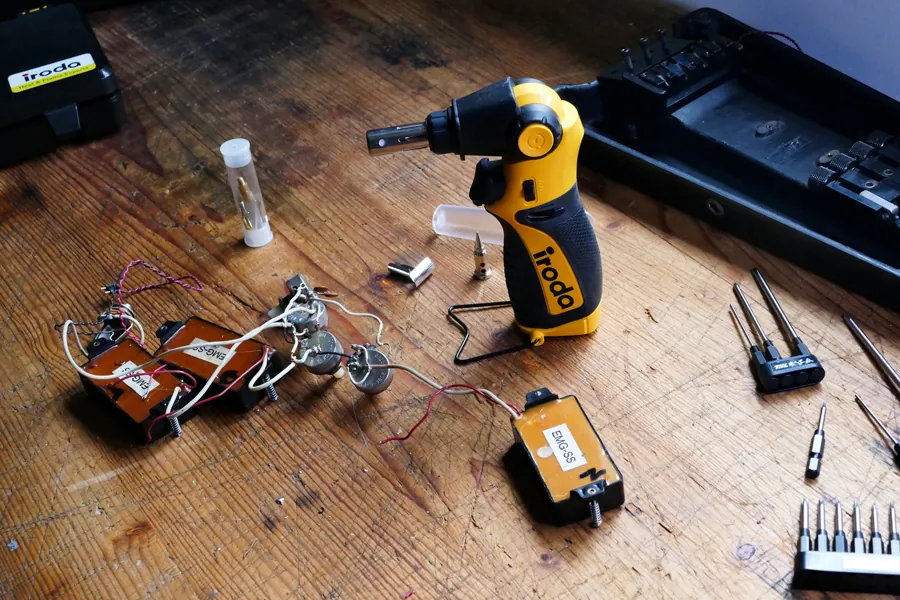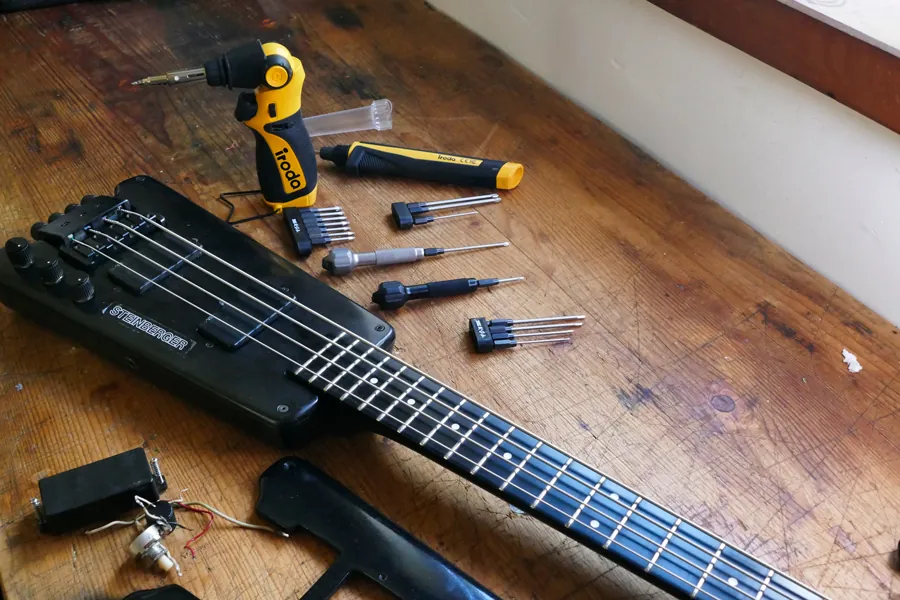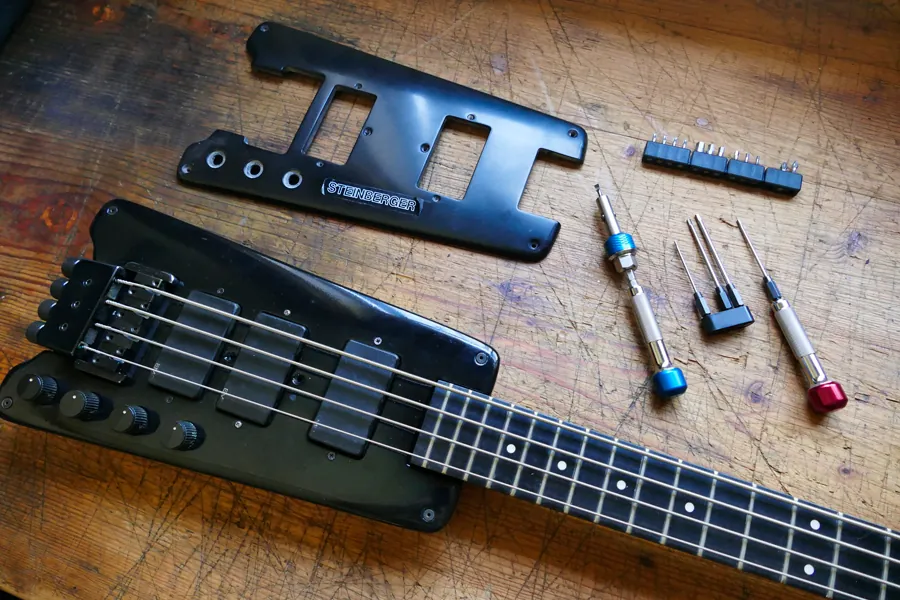The Iroda battery soldering iron proved to be good for light soldering jobs on my electric guitar project, but for cleaning solder off larger components where you need more heat the Iroda portable gas soldering iron proved to be a very effective alternative.
The project: restoring a Steinberger L2 bass back to its original state
When I got my Steinberger L2 it had been modified, fitted with three pickups instead of the original two, with a hand made wooden fascia plate instead of the original carbon fiber fascia. It didn’t look too bad, as you can see in the picture above, but it sounded terrible. I wanted to get it back to its original vintage condition. and this would mean opening it up and rewiring it to remove the extra pickup.

Successful desoldering with the battery soldering iron
The insides were a bit of a mess, even by the handmade-standards of 80s guitar manufacturing, and you can see here that I’ve already desoldered the spare pickup from the red (battery positive) wire and potentiometer using the Iroda 25L battery soldering iron. This proved to be perfectly adequate for the job even though it’s a low wattage iron.
What are the limitations of battery soldering?
I tested the limitations of the battery soldering iron by checking if it could remove the blob of solder used to attach the ground wire to the potentiometer. This is a challenge for low powered soldering irons as the potentiometer casing is a pretty big heat-sink. I found it couldn’t get enough heat in quickly enough to do more than smear the surface of the solder. This was fine for removing a wire, but not for attaching one or cleaning a component.
The Iroda gas soldering iron solution for heavy duty soldering jobs
I switched to a 50W butane Iroda gas soldering iron to see how easily that could deal with the ground wire that was soldered to the potentiometer. I would normally recommend a 60W mains soldering iron as a tool to do this sort of job, so I would be impressed if I could do it with the conveniently portable gas version.
The gas soldering iron quickly got enough heat into the potentiometer case to melt the ground connection, and could easily get enough heat there to remake the ground soldering. This got me thinking about how the gas soldering iron gave me other options for removing unwanted solder from large components that are difficult to heat up.

Heatsink solder removal by gas soldering torch…
The spare potentiometer was completely incorrect, rated at 250kΩ when the correct rating was 25kΩ so I was happy to do a ‘don’t try this at home’ experiment, of the sort you can only do with a gas soldering iron. The iroda gas soldering irons double as gas torches. I took off the soldering tip and briefly played the pencil torch flame on the spare potentiometer ground connection.
The solder melted instantly, leaving the potentiometer clean apart from ‘wipe-off’ carbon marking from the flame. With a bit of care it looked like a good method for solder removal that is only possible with a gas torch, just be careful to not have anything combustible in close proximity and follow the usual sensible health and safety precautions!

Putting it all back together
Having removed the extra components, I repaired a few suspect connections with a combination of battery and gas soldering irons and reassembled the guitar using the original two pickup fascia, resulting in an authentic Steinberger L2 bass rebuilt to the original specifications and with the original components.
How did the Iroda soldering irons perform?
- The battery soldering iron was convenient and effective for light work and desoldering
- The Iroda gas soldering iron was surprisingly powerful and very capable
- Being able to use the gas soldering iron as a gas torch offered additional benefits!
The Iroda soldering irons made the job quite straightforward, and nothing was damaged in the process. I could have replaced the scrappy wiring completely but part of the charm (and value) of vintage collectibles is keeping as much as possible intact, so being able to reuse the original parts was bonus.






